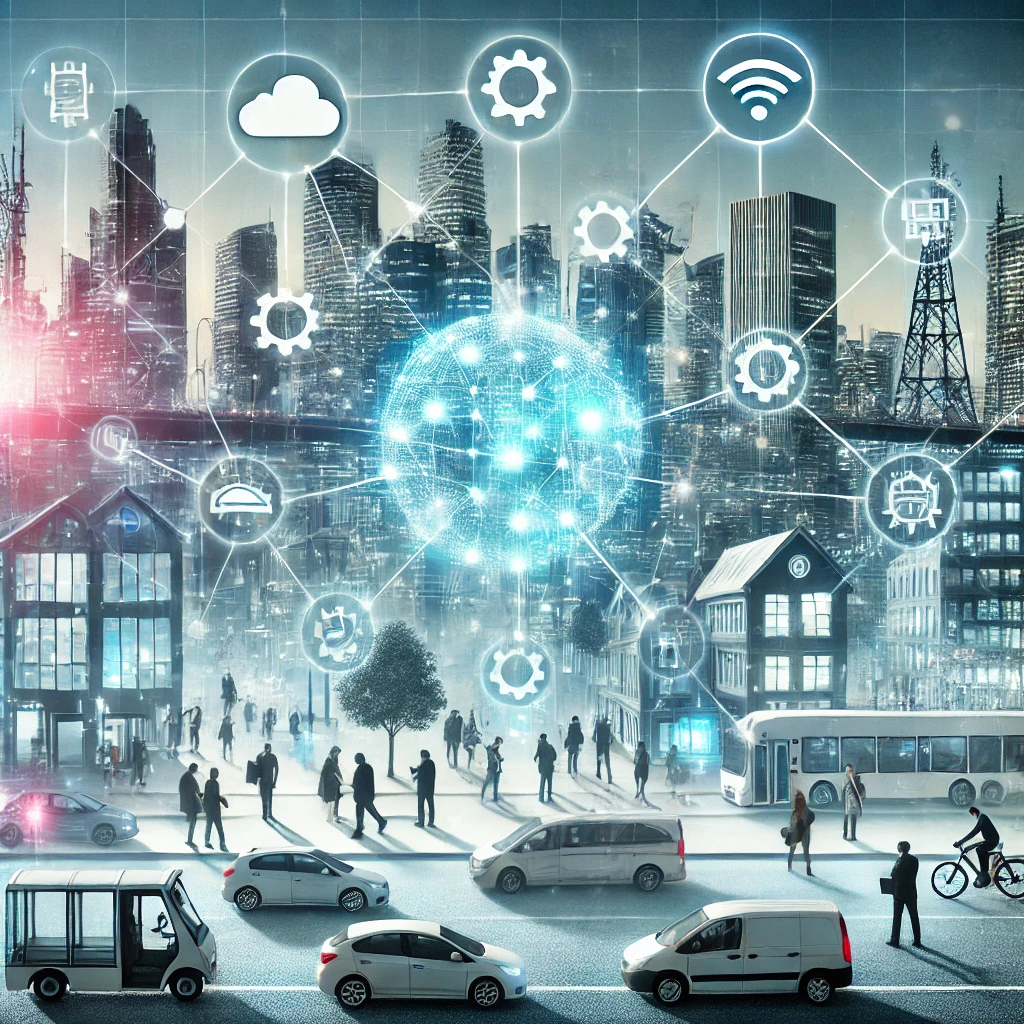
The Era of Connectivity
The Internet of Things (IoT) has grown from a buzzword to a transformative force. This technology has redefined industries, homes, and how we interact with the digital world. As the connected world expands, staying informed about IoT trends is essential. This article explores the latest IoT developments shaping the connected world and how they impact various sectors.
What Is IoT? A Brief Overview
To understand IoT trends shaping the connected world, we need a foundation. IoT refers to a network of devices connected via the internet, sharing data seamlessly. These devices range from everyday items like smart thermostats to industrial machinery. The goal is to enhance convenience, efficiency, and decision-making.
Top IoT Trends Shaping Connected World
1. Edge Computing: Processing at the Source
As IoT devices proliferate, the need for faster data processing has surged. Edge computing, which processes data near its source, minimizes latency. This trend ensures IoT devices can operate efficiently, even in remote areas.
- Why it matters: Faster responses and reduced data overload on central servers.
- Examples: Autonomous vehicles and smart factories utilizing real-time data processing.
2. IoT in Healthcare: Beyond Wearables
The healthcare industry has embraced IoT to improve patient outcomes. Devices like connected inhalers, glucose monitors, and smart beds provide real-time health insights.
- Key advancements: Remote patient monitoring, AI-powered diagnostics, and telemedicine integration.
- Impact: Better care for patients, especially in rural areas.
3. AI and IoT: Smarter Together
Artificial intelligence (AI) enhances IoT devices, making them smarter and more adaptive. This collaboration is revolutionizing sectors from agriculture to urban planning.
- How it works: AI analyzes vast IoT data to identify patterns and predict outcomes.
- Examples: Smart cities optimizing traffic and agriculture automating irrigation.
4. IoT and 5G: A Perfect Match
The rollout of 5G networks has accelerated IoT growth. With faster speeds and lower latency, 5G enables more devices to connect simultaneously.
- Applications: Real-time surveillance, smart manufacturing, and immersive AR/VR experiences.
- Future potential: Expanding IoT’s reach into densely populated urban environments.
5. Enhanced Security Measures for IoT Devices
As IoT expands, so do concerns about cybersecurity. Vulnerable devices can serve as entry points for hackers.
- Emerging solutions: Blockchain technology, advanced encryption, and AI-based threat detection.
- Why it’s critical: Ensures user trust and prevents data breaches.
6. Sustainability in IoT Development
Environmental consciousness has driven IoT developers to prioritize sustainability. IoT solutions now focus on reducing waste, saving energy, and promoting green practices.
- Examples: Smart grids optimizing energy usage and IoT in agriculture reducing water waste.
- Long-term benefits: Lower carbon footprints and increased efficiency.
7. Smart Homes and Consumer IoT
Smart home devices have become mainstream. From voice-controlled assistants to connected appliances, consumer IoT offers unparalleled convenience.
- Recent trends: Devices integrating AI for predictive behaviors.
- Popular devices: Smart speakers, thermostats, and security cameras.
8. IoT in Supply Chain Management
IoT is transforming supply chains by enhancing visibility and efficiency. Sensors and trackers provide real-time data on inventory and logistics.
- Impact: Reducing delays, minimizing costs, and improving decision-making.
- Industries benefiting: Retail, manufacturing, and e-commerce.
9. Wearable IoT: Expanding Beyond Fitness
Wearable technology now spans beyond fitness trackers. Innovations include AR glasses, health monitors, and smart clothing.
- New developments: Devices for monitoring workplace safety and improving productivity.
- Market growth: Expected to double by 2030, driven by health-conscious consumers.
10. IoT in Agriculture: Precision Farming
Agriculture has embraced IoT through precision farming techniques. Connected devices help farmers optimize resources and improve yields.
- Technology in action: Drones monitoring crops and sensors analyzing soil health.
- Benefits: Increased productivity and reduced environmental impact.
Challenges Facing IoT Adoption
1. Interoperability Issues
With countless IoT devices from different manufacturers, ensuring seamless communication remains a challenge. Standardizing protocols is essential for broader adoption.
2. Cost Barriers
Despite IoT’s potential, high implementation costs deter many small businesses. As technology becomes more accessible, this barrier will gradually diminish.
3. Data Privacy Concerns
As IoT devices collect vast amounts of data, questions around user privacy arise. Transparent policies and regulations are crucial to address these concerns.
The Future of IoT
The trends discussed above provide a glimpse into the future of IoT. As the technology evolves, the possibilities for connectivity are endless. From smart cities to connected health systems, IoT will continue to shape the world.
Conclusion: Embracing IoT Trends
The IoT trends shaping the connected world highlight the transformative power of connectivity. By addressing challenges like security and interoperability, IoT will unlock unprecedented opportunities. As businesses and consumers adapt, the connected world promises innovation and efficiency.
IoT is no longer a futuristic concept. It is here, shaping the way we live, work, and interact. To stay ahead, embracing these trends and understanding their implications is crucial. As we move forward, the connected world will only become more integral to our daily lives.
READ MORE :
- https://rmm.abyadi.com/iot-is-transforming-smart-living/
- https://rmm.abyadi.com/iot-smart-farming-for-a-sustainable/
- https://rmm.abyadi.com/iot-enhances-industrial-efficiency-in-smart-factories/